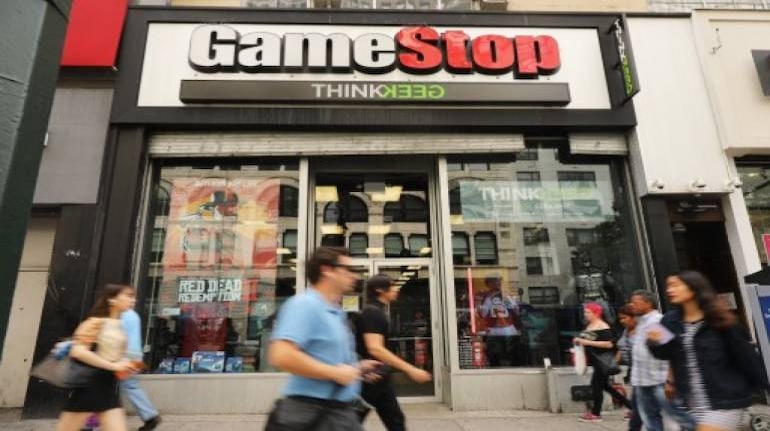
As a famed investor once said: I try to help the market. When they want to buy from me and are willing to pay any price, I sell it to them. When they want to sell to me and are willing to sell at any price, I buy from them.
We run a US multi-cap—or flexicap in the new terminology—strategy with around 25 equal-weighted stocks from multiple sectors or industries. We had GameStop—a Fortune 500 company offering games and entertainment products in more than 5000 stores across 10 countries—in this portfolio for quite some time, more than a year. Contrary to popular belief it is not a company which was or is close to bankruptcy. Rather, it had a strong balance sheet with significant cash on the books. In fact, most of the recent years, it has had more cash on the books than the long-term debt, meaning that net debt has been nil. Further, it has had operating cash flows of $300 to $500 million after paying interest of around $50-$60 million. This shows significantly high interest coverage.
Based on the latest earning announced on December 8th, 2020, the company had just $216 million of long-term debt and $75 million cash, i.e. net debt of $141 million. Compare this to its operating cash flow of $199 million. It could simply pay-off its debt using the cash flows and be a debt-free company.
This company was available at a market capitalization ranging from $3 billion to as low as $450 million. A company generating cash flow in the range of $300 million or so.
Naturally, it fit the criteria within the Scientific Investing framework which is based on the core insight: “Most market participants chase alpha but get risks, while one could chase safety and get alpha.”
The Scientific Investing framework that we follow is based on the above insight. The safety chase starts from the core of the companies, i.e., their balance sheets. The balance sheets should be pristine, ideally, with strong presence of cash and zero or low net debt. Further, the companies should have strong and stable business operations. Next step in capital safety is the persistent competitive advantage.
Finally, the company should be available at a significant discount to its intrinsic value.
A detailed analysis of GameStop led us to include it in our portfolio as one of the 25 equal-weighted stocks with an allocation of 4%. It was a long-term hold which could last from anywhere between 1.5-3 years typically, when Mr. Market wants to pay more than its intrinsic value and we find something else which Mr. Market is willing to sell us at much less than its intrinsic value.
Every quarter, the company’s developments were getting updated fundamentally and we were keenly watching how it was moving towards a path of digital-first from a traditional retailer. It was expected to be a slow-and-stead unfolding. However, somewhere around Jan 22nd onwards the share price started moving up significantly, going up to more than $100, to as high as $347 from around $40s on Jan 21st. Naturally, since we like to help Mr. Market we exited our position in different tranches at different prices ranging in the $100s to $300s. By Jan 27th we were completely sold out.
What were content to hold for next 2-3 years or even more as the fundamental story unfolded and got reflected in a slow-and-steady manner in the stock price was more than overshadowed by the needs of Mr. Market. We had trapped a Golden Swan, which was perceived as the ugly duckling by Mr. Market. (Ugly duckling, as we all know, is actually a swan, but not necessarily a golden swan.)
Golden Swan is the opposite of Black Swan. Black Swan—popularized by Nassim Taleb—is an extremely rare, but very high negative impact event which cannot be predicted but can be prepared for. Golden swan is an extremely rare, but very high positive impact event which cannot be predicted but prepared for.
The moral of the story is that look for ugly ducklings in a systematic manner. For us, GameStop turned out to be that ugly duckling. Allocate to enough ugly ducklings, i.e., 20-30, so that it increases the probability of a Golden Swan getting trapped. This is in sharp contrast to the widely held belief, popularized by Buffett-partner, Charlie Munger, that one should hold a highly concentrated portfolio to generate alpha. In fact, the 25-stock portfolio, if designed right, not only is a less-riskier portfolio, but also increases the probability of high alpha generation at the same time.
Also read: Investing lessons from Warren Buffett’s letter to shareholders
If done right, most of the time the portfolio would have enough swans to deliver market-beating returns or alpha. However, occasionally it would trap a Golden Swan. This is the venture capital-like aspect of the portfolio design which allows it to significantly increase the upside and alpha potential of this strategy.
Chasing ugly ducklings could lead to trapping Golden Swans!
Disclaimer: Equity investments are subject to market risks. Global investments entail currency and country risks. The above is not a recommendation to buy, sell or hold any of the stocks or sectors mentioned. We and our clients might have exposure to the above-mentioned stocks or sectors. Please consult your investment advisor and assess the suitability of investment products for your circumstances before investing.
Discover the latest Business News, Sensex, and Nifty updates. Obtain Personal Finance insights, tax queries, and expert opinions on Moneycontrol or download the Moneycontrol App to stay updated!
Find the best of Al News in one place, specially curated for you every weekend.
Stay on top of the latest tech trends and biggest startup news.